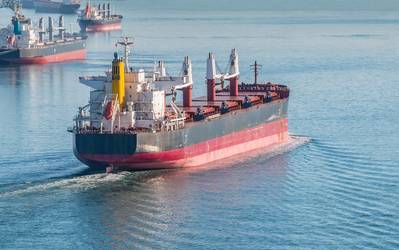The dry bulk market’s strong end to 2016 is unlikely to last long into 2017, according to the latest research from Maritime Strategies International. In its latest quarterly dry bulk market report*, MSI predicts a depressed year for rates in 2017, a year marked by multiple risks to recovery.
Stronger freight markets in Q4 2016 had been broadly expected by MSI, albeit for slightly different reasons. While iron ore trade undershot its expectations, coal trade overshot them with geographical imbalances playing a key role.
However, MSI believes the short term support factors will have unwound in a matter of weeks. Chartering of Capesize vessels for iron ore out of Brazil and Australia for January loading had slowed before year-end, dragging down spot rates. French nuclear power capacity is set to resume output in January, placing downwards pressure on Panamax coal demand, coinciding with a slowdown in grains trade from the US Gulf.
Will Fray, Senior Analyst at MSI says a combination of factors will continue to shape the market during 2017, but in general, rates will remain depressed.
“In our Base Case there is little to suggest any significant changes to the market through the remainder of 2017 and it is MSI’s view that freight rates will remain depressed. Overall, we forecast deadweight demand growth will broadly match supply growth at around 3-3.5% year on year. On this basis we see little reason for freight rates to move meaningfully, other than for short-lived or localised spikes.”
MSI is marginally more positive for smaller geared bulkers, but marginally more negative for the larger vessels than earlier forecasts, based on year to date earnings data.
“In the longer-term, our forecasts for 2018 and beyond are still positive but have come down since our last update, mainly as a result of a slightly more bearish view of Chinese steel production, iron ore imports and European coal imports,” adds Fray. “We see very little room for supply-side adjustments to compensate given our already-weak contracting and strong scrapping Base Case forecasts. On average we have lowered our 2018-20 timecharter rate forecasts by 8-10% from our Q3 report.”
MSI highlights a strong potential for 2017 coal trade to deviate from its Base Case forecast due to uncertainty over Chinese and Indian imports. It also identifies Chinese iron ore imports as a key risk for the Capesize market, due to uncertainty over the timing of the peak of steel production and how quickly Chinese domestic iron ore production falls - or if it stops falling should iron ore prices surprise to the upside.












